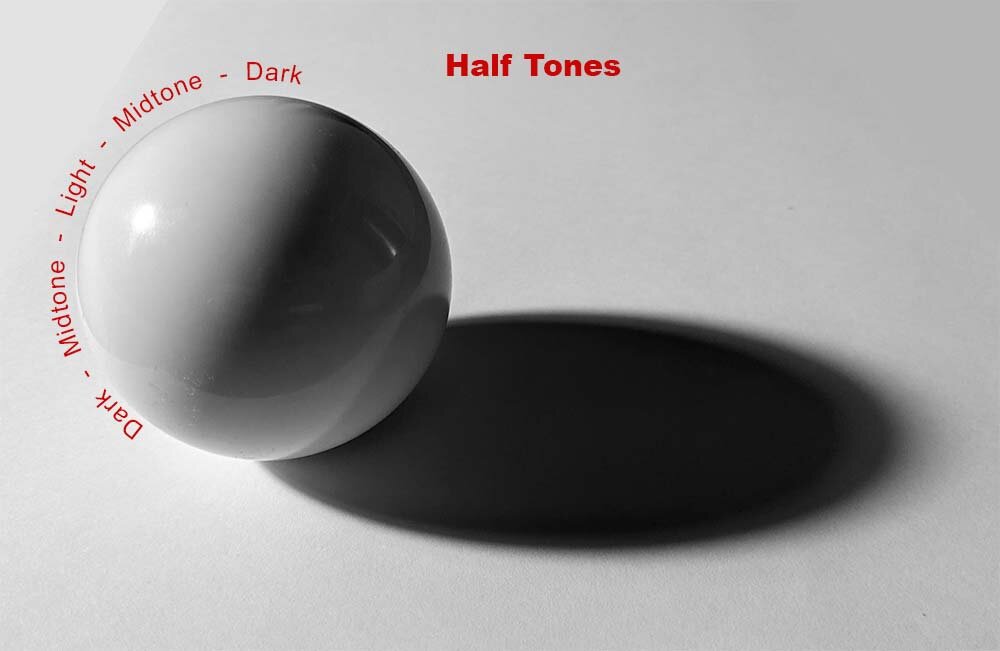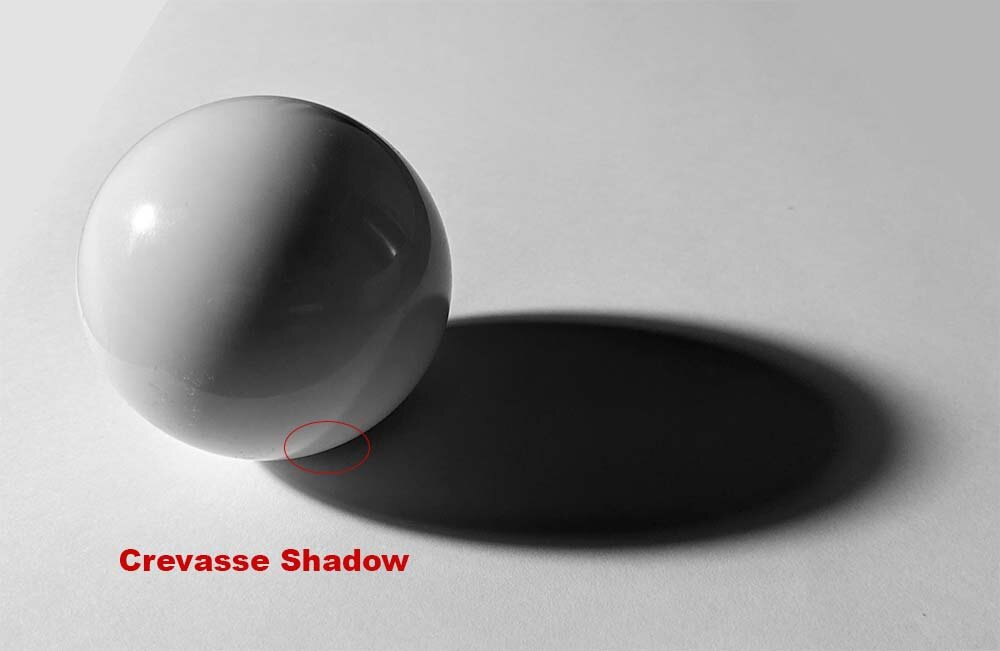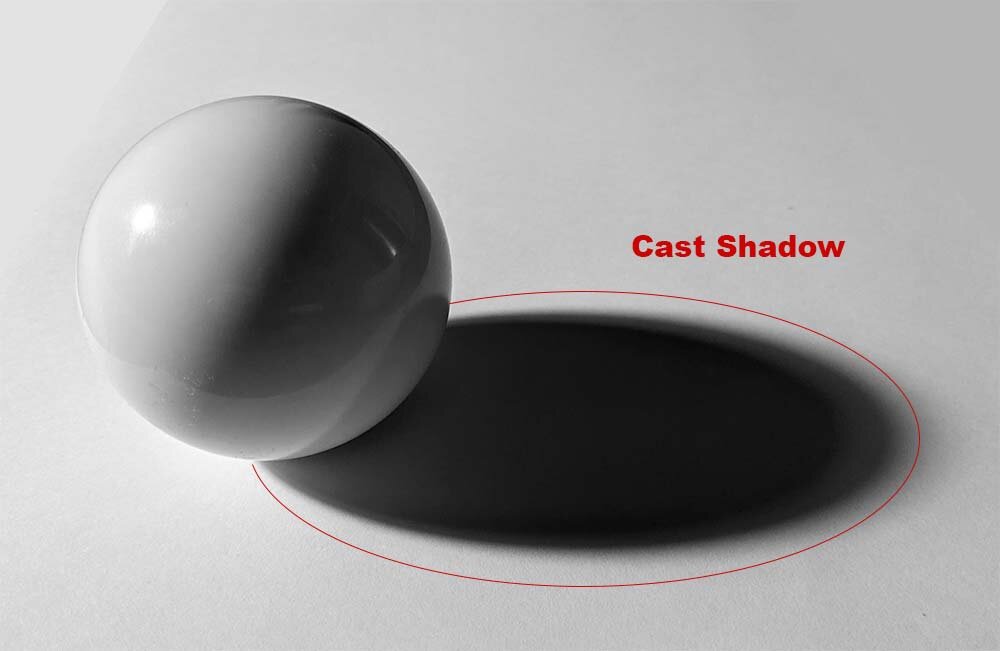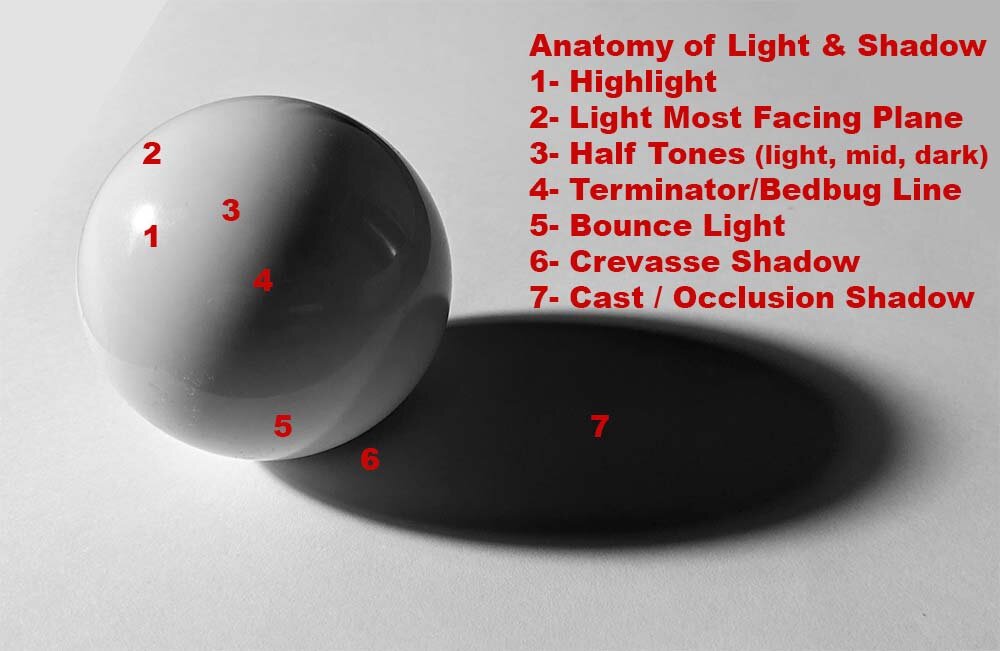Understanding Light & Shadow Terminology
At its most basic, light is what allows us to see objects out in the world. Imagine the last time you lost power after dark. Suddenly that couch had no soft curve, the picture frames no longer had hard edges. You could see no object’s form because you could see nothing at all.
Even just the tiniest bit of light would change that. A candle flicker. A cell phone flashlight. And form appears again.
Understanding light and shadow is an incredibly important part of Todd M. Casey’s work.
We need light in order to see form. But really we need to see how that light moves from light to shadow on an object that lets us experience the form of the shape. And if you are a representative painter (photorealistic to abstracted), learning to see the interplay of light and shadow is your best way to translate the 3d world onto a 2d piece of paper.
ANATOMY OF LIGHT AND SHADOW
In my conversation with Todd M. Casey (Ep. 24), Casey discussed how light moves around an object. Let’s break it down.
Let’s say you are looking at a sphere and there is one main light facing that sphere.
We’re starting with something incredibly simple so that you can understand the terms and what’s happening. But these same principles apply for everything from folds of fabrics to a vase holding flowers.
LIGHT MOST FACING PLANE
The sphere itself is divided into two parts. The side that the light hits directly is called the light most facing plane. The side that the light doesn’t hit directly is called the shadow side.
Not every part of the light most facing plane has the same amount of light hitting it. To describe how that light changes we need to bring in half tones.
Light half tone, mid halftone and dark half tone all make up the light most facing plane as it moves towards the shadow side of the sphere.
TERMINATOR (Bedbug line)
There are two types of shadows: form shadows and cast shadows. The name tells you how each is created. The form shadow happens as light moves around the form. The cast shadow is cast by another object blocking the light.
With our hypothetical sphere, the terminator (also known as the bedbug line) is the start of the form shadow on our sphere.
As we move into the shadow, it’s useful to really look at what’s happening in a shadow because it may not be what you think intuitively. Shadows don’t just get darker as they go. This is because of something called bounce light.
As the name implies, bounce light is light bouncing off of the surface the sphere is sitting on and pushing back up into the shadow. This lightens parts of the shadow up again. You may even get a splash of unexpected color through reflected light here as well. (Or why portrait artists sometimes paint a bit of their model’s shirt color on the underneath side of the model’s chin.)
Bounce light is the reason the shadow isn’t all pitched into extreme darkness.
THE CREVASSE SHADOW (Occlusion shadow)
The crevasse shadow (also known as the occlusion shadow) is the part of the sphere just above where it touches the ground. Light can’t bounce it’s ways back up into this part of the form. For this reason, the crevasse shadow will be the darkest part of your shadow.
CAST SHADOW
Now that we have circled the sphere, let’s move down to the surface on which the sphere sits.
Again, there are two types of shadows: the form shadow and the cast shadow. Now that we have hopped off the sphere and are down on the surface, we are looking at the cast shadow. This shadow has been made by the sphere blocking light and casting this shadow onto the surface.
The cast shadow is a great place to play with edges. Generally (but not always so you’ll need to look carefully) the cast shadow has harder edges than the terminator.
The cast shadow will also generally have harder edges closer to the form. As it moves further away from the form, the shadow edges will grow softer.
THE HIGHLIGHT
The final piece of light to consider on an object is the highlight. The highlight will be the lightest light in your painting.
But look closely to where the highlight actually is. Unlike the shadow and light most facing plane, the highlight moves with the viewer.
Think of it like pool table geometry. The term is angle of incidence, which means if a pool ball approaches a wall at 20 degrees, it will bounce off that wall at 20 degrees as well.
Light does the same thing. The wall (in this pool analogy) is the viewer, sitting halfway between where the light is coming from and where the light is going.
USING LIGHT AND SHADOW IN YOUR ART
We looked at light and shadow in a simple sphere set up. Now it’s time to translate this to what you’re seeing in your references. The length of the shadows and how dark they are will all depend on your light. The amount of bounce light will depend on how much bouncing there is to do.
But whether or not you’re looking at wrinkles fabric or a tea cup, light will behave within the same principles as above. And if you’re a realistic painting (from photo realism to abstracted realism) understanding what’s happening in terms of light and shadow will make you a stronger painter.
Get articles like this and new podcast episodes sent straight to your inbox by signing up for the newsletter below.










